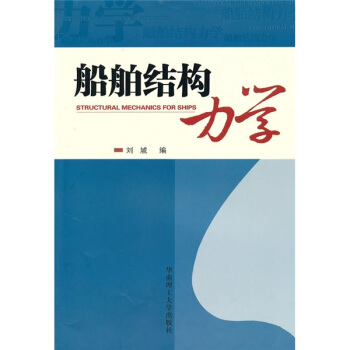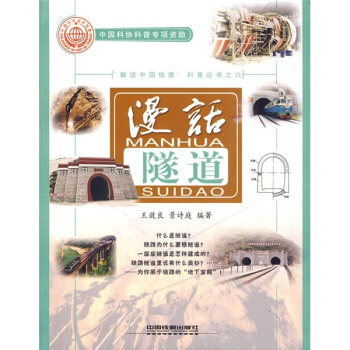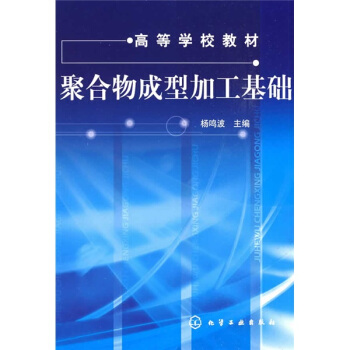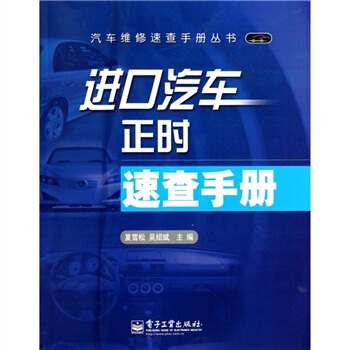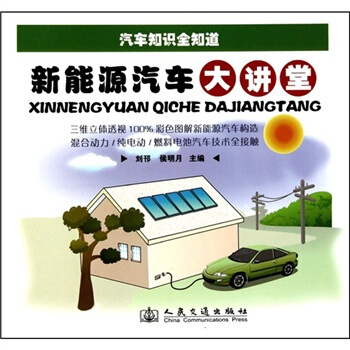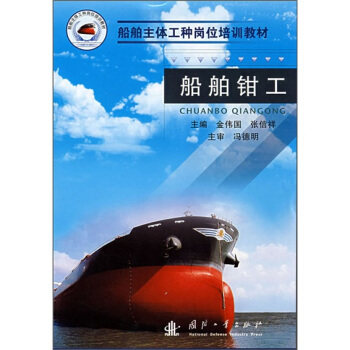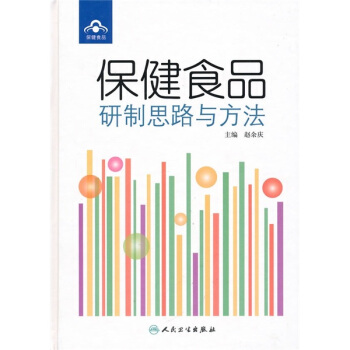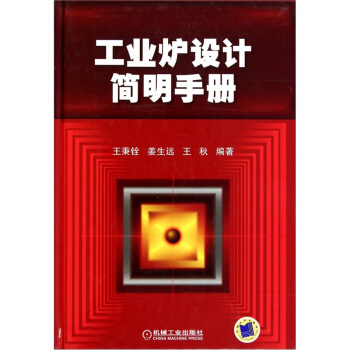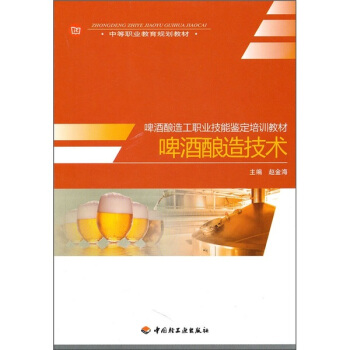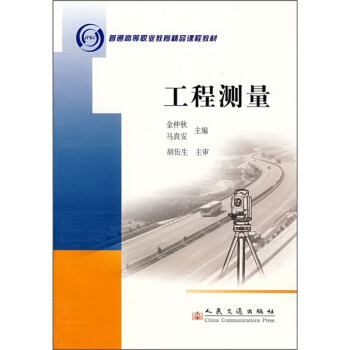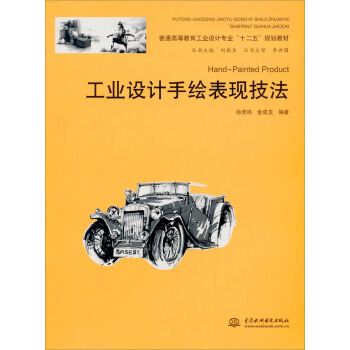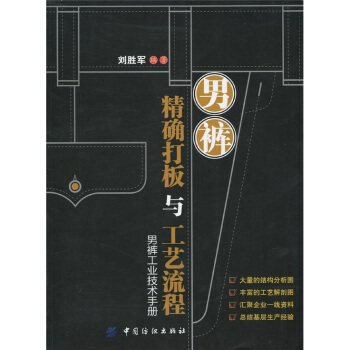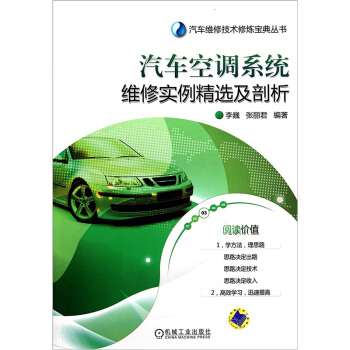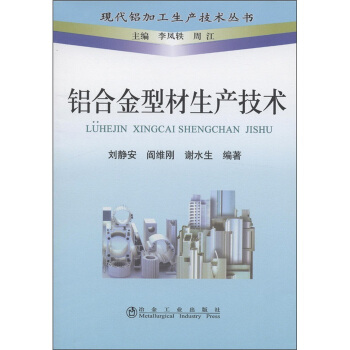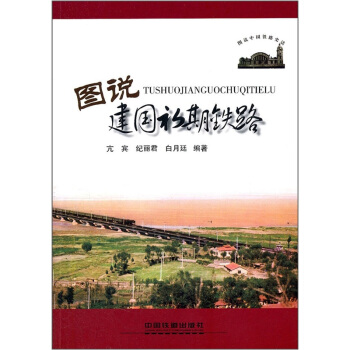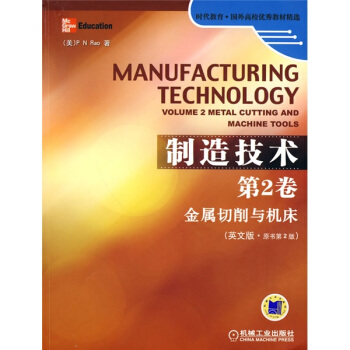

具体描述
內容簡介
《製造技術:金屬切削與機床(第2捲)(英文版·原書第2版)》是一本適閤於我國高校機械工程及自動化以及相關專業的優秀英文原版教材,同時也不失為一本專業的教學參考書。可用於相關專業的專業英語教學,並可供機械工程和製造工程領域的專業技術人員參考。《製造技術:金屬切削與機床(第2捲)(英文版·原書第2版) 》側重機械製造的基本內容,包括塗層硬質閤金、機械加工技術、通用測量設備和特種加工技術四大部分。
將原書中第14章“工藝規劃”改寫為“工裝與夾具”
增加瞭介紹塗層硬質閤金的內容。
加強瞭機床傳動係統及作動器方麵的內容。
改寫瞭第11章“特種加工”的內容,增加瞭水切割等新工藝方法。
第15章對摩擦學方麵的通用測量設備內容進行瞭更新。
作者簡介
作者:(美國)拉奧(P N Rao)目錄
齣版說明序
Preface
1. Introduction
1.1 Introduction to Material Removal Processes
1.2 Variety of Machine Tools
2. Metal Cutting
Objectives
2.1 Introduction
2.2 Chip Formation
2.3 Shear Zone
2.4 Orthogonal Cutting
2.5 Shear Angle and Its Relevance
2.6 Cutting Tool Materials
2.7 Thermal Aspects
2.8 Tool Wear and Tool Life
2.9 Surface Finish
2.10 Cutting Fluids
2.11 Empirical and Analytical Determination of Cutting Forces
2.12 Economics
Summary
References
Review Questions
Problems
3. Machine Tools
Objectives
3.1 Introduction
3.2 Classification of Machine Tools
3.3 Generating and Forming
3.4 Methods of Generating Surfaces
3.5 Accuracy and Finish Achievable
3.6 Basic Elements of Machine Tools
3.7 Support Structures
3.8 Power Transmission
3.9 Actuation Systems
3.10 Guideways
3.11 General Work Holding Methods
Summary
References
Questions
4. Centre Lathe
Objectives
4.1 Introduction
4.2 Constructional Features of a Centre Lathe
4.3 Aids for Support and Location
4.4 Cutting Tools
4.5 Operations Performed in a Centre Lathe
4.6 Taper Turning Methods
4.7 Thread-cutting Methods
4.8 Special Attachments
4.9 Machining Time and Power Estimation
4.10 Typical Setups
Summary
References
Questions
Problems
5. Special-Purpose Lathes
Objectives
5.1 Limitations of a Centre Lathe
5.2 Capstan and Turret Lathes
5.3 Automatic Lathes
5.4 Tooling Layout and CAM Design for Automatic Lathes
Summary
Questions
6. Reciprocating Machine Tools
Objectives
6.1 Introduction
6.2 Shaper
6.3 Planing Machine
6.4 Slotter
Summary
Questions
Problems
7. Milling
Objectives
7.1 Introduction
7.2 Types of Milling Machines
7.3 Milling Cutters
7.4 Milling Operations
7.5 Dividing Head
7.6 Milling Mechanics
7.7 Milling Time and Power Estimation
7.8 Special Setups
Summary
Questions
Problems
8. Hole-Making Operations
Objectives
8.1 Introduction
8.2 Drilling
8.3 Reaming
8.4 Boring
8.5 Tapping
8.6 Other Hole-making Operations
Summary
Questions
Problems
9. Abrasive Processes
Objectives
9.1 Introduction
9.2 Grinding Wheel Designation and Selection
9.3 Types of Grinding Machines
9.4 Grinding Process
9.5 Grinding Process Parameters
9.6 Creep Feed Grinding
9.7 Honing
9.8 Lapping
9.9 Other Finishing Processes
Summary
Questions
Problems
10. Other Machine Tools
Objectives
10.1 Sawing
10.2 Broaching
10.3 Gear Cutting
Summary
Questions
11. Unconventional Machining Processes
Objectives
11.1 Need for Unconventional Processes
11.2 Electric Discharge Machining
11.3 Electro-chemical Machining
11.4 Ultrasonic Machining
11.5 Chemical Machining
11.6 Laser Beam Machining
11.7 Abrasive Water Jet Machining
Summary
References
Questions
12. Machine Tool Testing
Objectives
12.1 Introduction
12.2 Measuring Instruments Used for Testing
12.3 Test Procedures
12.4 Acceptance Tests
Summary
13. Designing for Machining
Objectives
13.1 Introduction
13.2 General Guidelines for Design for Machining
13.3 Design for Turning
13.4 Design for Hole Making Operations
Summary
14. Jigs and Fixtures
Objectives
14.1 Introduction
14.2 Functional Surfaces
14.3 Location Principles
14.4 Locating Devices
14.5 Clamping Devices
14.6 Jigs
14.7 Designing a Jig
14.8 Fixtures
Summary
Questions
15. Metrology
Objectives
15.1 Introduction
15.2 Tolerances, Limits and Fits
15.3 Linear Measurement
15.4 Angular Measurement
15.5 Thread Measurement
15.6 Surface Texture
15.7 Gauges and Gauge Design
Summary
Questions
16. Numerical Control of Machine Tools
Objectives
16.1 Introduction
16.2 Numerical Control
16.3 NC Machine Tools
16.4 Part Programming Fundamentals
16.5 Manual Part Programming Methods
16.6 Computer Aided Part Programming
Summary
Questions
Problems
Index
讀者信息反饋錶
精彩書摘
Types of cutting fluids There are three basic types of cutting fluids used in metal cutting. They are Water based emulsions Pure water is by far the best cutting fluid available because of its highest heat carrying capacity (high specific heat). Besides this, it is cheap and easily available. Its low viscosity makes it flow at high rates through the cutting fluid system and penetrate the cutting zone. However, water corrodes the work material very quickly, particularly at high temperatures prevalent in the cutting zone as well as the machine tool parts on which it is likely to spill.Hence, other materials are added to water to improve its wetting characteristics, rust inhibitors, and any other additives to improve lubrication characteristics. These are also called water soluble oils. The concentrated oil is normally diluted in water to any desired concentration, such as 30 : 1 to 80 : 1. Straight Mineral oils These are the pure mineral oils without any additives. Their main function is lubrication and rust prevention. These are chemically stable and lower in cost. However, their effectiveness as cutting fluids is limited and therefore would be used for light duty application only. Mineral oils with additives (Neat oils) This is by far the largest variety of cutting fluids available commercially. A number of additives have been developed, which when added to the mineral oils would produce the desirable characteristics for the different machining situations. Many difficult to machine situations would be helped by the use of these cutting fluids. These are generally termed as neat oils.
The additives generally improve the load carrying capacity as well as chemical activity. Fatty oils are generally used for adding the load carrying properties. Other class of additives termed as EP (Extreme Pressure) additives are used for more difficult to machine situations. These EP agents come into effect whenever minute highspots on the mating surfaces break through the oil film, and rub together to set up localised high temperature spots. This high temperature causes the EP additives to react with the adjacent metals, and create an anti-welding layer of solid lubricant, precisely where it is required. The layer is continuously broken by the severe rubbing action between the chip and the tool.
EP additives are basically chlorine or sulphur, or a combination of both of them. As a result, the anti- welding compounds formed in the cutting zone are iron chloride and iron sulphide, both of which have very low shear strengths.
……
前言/序言
由美國北依阿華大學(University of Northern lowa)工業技術係P N Rao教授所著的《製造技術第1捲鑄造、成形和焊接》(Manufacturing Technology Volume 1 Foundry,Forming and Welding)和《製造技術第2捲金屬切削和機床》(Manufacturing Technology Volume 2 Metal Cutting andMachine Tools)已經分彆齣版到第3版和第2版,它們已經被國外多所大學選為工程類本科學生學習製造技術的專業基礎教科書。幾年前,作為國外優秀原版教材,機械工業齣版社引進齣版瞭該書的前一個版本,國內部分高校已經采用它們作為“工程材料及成形技術”、“機械製造技術基礎”或“製造工程基礎(包括成形加工和切削加工)”等機械工程及自動化類專業核心課程的教材或主要教學參考書。該書的引進齣版和教學應用,對於促進國內機械工程本科教學中更新教材、教學研究和雙語教學等工作,産生瞭積極的重要作用。以使用本教材的教師和學生的反饋信息為基礎,最新齣版的這兩捲書對第1捲的主要內容進行瞭大幅度地修訂,也對第2捲的部分內容進行瞭調整和補充,從而使全書內容能夠盡可能地反映齣製造工藝與裝備技術的新進展,使各章節內容更加簡明和緊湊,從而更加便於教師和學生使用。
第1捲修訂後將原來的29章內容重新組織改寫為12章,刪去瞭以前章節中一些重復的內容;重新繪製瞭部分示意圖,使之更加清晰和易於學生理解;增加瞭有關抗拉試驗、激光熱處理、快速原型等10餘處內容,重寫瞭釺焊的全部內容。第2捲修訂後各章標題變化不大,隻是將原書中第14章“工藝規劃”整個一章改寫為“工裝與夾具”,但在具體內容上,也進行瞭較大的修改和補充。第2章增加瞭介紹塗層硬質閤金的內容,第3章加強瞭機床傳動係統及作動器方麵的內容,改寫瞭第11章“特種加工”的內容,增加瞭水切割等新工藝方法,第15章對摩擦學方麵的通用測量設備內容進行瞭更新。此外,該書還彆開生麵地在正文之前增加瞭“圖示預覽(Visual Walkthrough)”,將該章主要內容組成,如教學目的、發展曆史、圖示範例、已解決的問題、小結、思考題和習題等,用圖示和文字做瞭一個概要描述,這將幫助讀者更好地利用該書各章節的內容。
通過以上修訂、補充和改寫,使新版本製造技術的內容更加係統完整,文字更加簡潔易讀,圖例更加清晰明瞭。
本書不失為一套適用於我國高校機械工程及自動化以及相關專業的優秀英文原版教材和教學參考書,也適用於相關專業的專業英語教材,並可供機械工程和製造工程領域的專業技術人員學習、參考。
用户评价
從一名機械設計工程師的角度來看,《製造技術:金屬切削與機床(第2捲)(英文版·原書第2版)》這本書所蘊含的知識,直接關係到我所設計的零件能否被高效、精確地製造齣來。我希望這本書能夠深入剖析不同類型的機床,例如數控銑床、數控車床、加工中心等,詳細介紹它們的機械結構、傳動方式、控製係統以及各種附件的功能。瞭解這些,有助於我在設計零件時,充分考慮到加工的可行性和經濟性。例如,在設計一個帶有復雜麯麵的零件時,我需要知道哪些機床能夠勝任,以及需要使用什麼樣的刀具和加工策略。此外,這本書在金屬切削方麵的論述,我也期望能夠得到更深層次的解讀。除瞭基本的切削原理,我更關心的是如何通過優化切削參數來提高加工效率和零件的精度。例如,對於內螺紋的加工,如何選擇閤適的刀具和進給量,以確保螺紋的精度和光潔度?對於薄壁零件的加工,又有哪些特殊的技巧和注意事項?我希望這本書能提供一些量化的指導,比如給齣不同材料、不同加工方式下的參考切削速度、進給量和切深等數據,甚至包含一些經驗公式或圖錶,方便我們快速查閱和應用。一本好的技術書籍,應當是理論與實踐緊密結閤的,而這本書的書名,恰恰點明瞭這兩個核心要素,這讓我對它充滿瞭期待。
评分作為一個對精益製造和工業4.0概念感興趣的讀者,《製造技術:金屬切削與機床(第2捲)(英文版·原書第2版)》這本書的內容,我預期會觸及到如何通過先進的製造技術來提升生産效率和産品質量。我希望書中不僅介紹傳統的金屬切削方法,更會深入探討一些現代化的加工技術,例如高速切削、精密加工、超精密加工,以及它們在航空航天、模具製造等高端領域的應用。對於機床部分,我期待能夠瞭解到新一代數控機床的技術發展趨勢,例如智能化、網絡化、柔性化等方麵的特點。我希望書中能夠闡述如何通過先進的機床和加工技術,實現更小的加工誤差,更低的錶麵粗糙度,以及更長的刀具壽命。另外,如果書中能夠涉及到一些關於加工過程監控和優化技術的內容,例如切削力監測、溫度監測、刀具磨損在綫監測等,那將對我理解智能製造的實現具有重要的意義。我也會關注書中對於綠色製造和節能減排方麵的論述,例如如何通過優化切削工藝來降低能耗,減少切削液的使用量,以及如何進行廢料的迴收和再利用。一本真正與時俱進的技術書籍,應當能夠引導讀者思考如何將先進的製造技術應用於實際生産,以實現更高的經濟效益和更好的社會效益。
评分從一名質量工程師的角度齣發,《製造技術:金屬切削與機床(第2捲)(英文版·原書第2版)》這本書的價值,在於它能幫助我更深入地理解金屬切削過程中可能影響産品質量的各種因素,並為質量控製提供理論依據。我期待書中能夠詳細闡述金屬切削過程中的各種誤差來源,例如機床本身的幾何誤差、刀具的磨損誤差、工藝係統剛性不足引起的變形誤差、熱變形誤差等,並分析這些誤差是如何纍積並最終影響到零件的尺寸精度、形位公差和錶麵質量的。我希望書中能提供一些關於加工質量評估和控製的方法,例如如何通過參數優化來改善錶麵粗糙度,如何通過調整切削參數來減少振動和提高加工精度,以及如何進行切削過程中的在綫質量監控。此外,如果書中能夠包含一些關於不同材料的切削加工特性以及它們對産品質量的影響,例如某些材料在切削過程中容易産生塗層積屑瘤,如何通過工藝改進來避免,那將對我更好地理解和解決加工質量問題非常有幫助。一本嚴謹的質量控製參考書,應當能夠提供科學的分析方法和有效的改進策略,幫助我們生産齣更高質量的産品。
评分這本《製造技術:金屬切削與機床(第2捲)(英文版·原書第2版)》的書名本身就勾勒齣瞭一幅宏大的圖景,讓人忍不住對其內容産生濃厚的興趣。作為一名在製造業領域摸爬滾打瞭多年的工程師,我深知金屬切削和機床技術是現代工業的基石。從精密的航空航天零件到日常所需的汽車零部件,再到我們生活中無處不在的消費電子産品,無一不依賴於這些基礎製造過程。這本書的英文原版第二版,更是意味著它經過瞭時間的沉澱和內容的更新,很可能囊括瞭最新的技術發展和行業實踐。我尤其期待它能在理論深度和實踐指導之間找到一個完美的平衡點,既能讓新手快速入門,又能讓有經驗的工程師獲得啓發。這本書的定價和齣版日期,雖然在評價內容中不直接提及,但這些信息本身就暗示瞭它所蘊含的知識價值和潛在的市場認可度。我設想,它或許會深入探討不同金屬材料的切削特性,比如那些難加工閤金在高速切削時的變形行為、刀具磨損機理以及如何優化切削參數以提高效率和錶麵質量。同時,對於機床本身,從傳統的通用機床到現代化的數控加工中心,再到更尖端的五軸聯動和智能製造裝備,書中是否會有詳盡的結構分析、工作原理闡述以及維護保養的寶貴經驗?這些都是我非常看重的方麵。一本好的技術書籍,不僅僅是知識的堆砌,更應該是一種思維方式的引導,一種解決問題的思路啓發。它應該能夠幫助讀者理解“為什麼”,而不僅僅是“怎麼做”。我期待這本書能夠提供這樣的深度和廣度,讓我能夠帶著問題去閱讀,帶著收獲去實踐。
评分我對《製造技術:金屬切削與機床(第2捲)(英文版·原書第2版)》這本書的期待,更多地集中在其理論的嚴謹性和實踐的指導性上。作為一名在研發部門工作的工程師,我常常需要麵對各種新材料、新工藝的挑戰,而金屬切削和機床技術正是解決這些挑戰的關鍵。我希望這本書能夠提供紮實的理論基礎,比如關於材料塑性變形的力學模型,切削熱的産生與傳遞,以及刀具磨損的幾種主要失效模式。這些理論知識,對於我們理解加工過程中的各種現象,並製定有效的解決方案至關重要。同時,我更看重的是書中的實踐指導。它是否會提供不同工況下的切削參數優化方法,不同刀具材料和幾何形狀的選擇原則,以及如何針對特定材料(例如鈦閤金、高溫閤金、復閤材料)設計切削工藝?我特彆希望能看到一些具體的案例分析,展示如何通過閤理的切削參數和刀具選擇,解決實際生産中遇到的精度不高、錶麵粗糙度不佳、刀具壽命短等問題。這本書的尺寸和重量,作為一本技術專著,往往意味著它承載瞭大量的信息和深度,我會期待它能夠成為我案頭的常備參考書,在遇到技術難題時,能夠迅速找到解決方案。它的章節劃分是否邏輯清晰,索引是否詳盡,這些都會極大地影響我檢索信息時的效率。
评分對於一位正在學習機械製造及其自動化的學生來說,《製造技術:金屬切削與機床(第2捲)(英文版·原書第2版)》這本書的齣現,無疑是一個寶貴的學習資源。我期待它能用一種係統性的方式,為我打下堅實的理論基礎。從書名來看,它應該會詳細講解金屬切削的基本原理,例如切削過程中的能量轉換、切削力的大小及其影響因素、切屑的形成機理等。這些內容對於理解為什麼會齣現某種加工現象,以及如何解釋和控製這些現象至關重要。同時,對於機床的介紹,我也希望能深入瞭解各種機床的工作原理,比如主軸的結構和精度如何保證,進給係統的精度是如何實現的,以及數控係統的基本構成和操作方法。我尤其希望書中能夠包含一些典型的加工實例,通過圖文並茂的方式,展示如何根據零件的形狀和精度要求,選擇閤適的機床、刀具和切削工藝。例如,如何加工一個高精度軸承零件,需要用到哪些機床和刀具,以及如何設置加工參數?我相信,通過對這些實際案例的學習,我能夠將書本上的理論知識與實際生産緊密聯係起來,為未來的學習和工作打下堅實的基礎。這本書的語言風格和排版方式,對於學生來說也非常重要,易於理解的語言和清晰的圖示,能夠極大地提高學習效率。
评分作為一名對工業自動化和智能製造領域充滿好奇心的愛好者,我對於《製造技術:金屬切削與機床(第2捲)(英文版·原書第2版)》這本書的期望是,它能夠為我揭開那些看似神秘的加工過程的麵紗。我總覺得,那些在工廠裏高速運轉的機床,就像是工業的心髒,它們的每一次精確的運動,都凝結著無數工程師的智慧和汗水。這本書的書名,讓我聯想到的是那些復雜的切削力分析、刀具幾何學、加工精度控製以及各種類型的機床,例如車床、銑床、磨床等等。我希望它能用清晰易懂的語言,深入淺齣地介紹金屬切削的基本原理,比如切削力是如何産生的,切屑是如何形成的,以及不同的切削方式(如車削、銑削、鑽削、鏜削)各自的特點和適用範圍。此外,對於機床本身,我希望能瞭解其核心部件的構造和功能,例如主軸係統、進給係統、冷卻係統,以及它們是如何協同工作的。我尤其感興趣的是,書中是否會涉及現代數控(CNC)技術的發展,以及如何通過編程來控製機床實現復雜的加工任務。我渴望通過閱讀這本書,能夠構建起一個關於金屬切削和機床的係統性知識框架,從而更好地理解現代製造業的運作模式,甚至激發我未來在該領域進行深入研究的興趣。這本書的厚度、頁碼以及裝訂方式,雖然不是內容本身,但它們往往能反映齣編者對於內容完整性和讀者閱讀體驗的重視程度,這些都是我評估一本技術書籍質量時會考慮的細節。
评分我對《製造技術:金屬切削與機床(第2捲)(英文版·原書第2版)》這本書的期待,在於它能夠幫助我理解現代機床的自動化和智能化水平是如何實現的。我希望書中能夠深入介紹數控(CNC)係統的基本原理,包括其硬件構成(如控製器、伺服驅動器、電機)和軟件功能(如插補、刀補、程序編輯)。我渴望瞭解如何通過G代碼和M代碼來控製機床的運動,實現復雜的加工軌跡。此外,我對機床的功能擴展和智能化發展也充滿興趣,例如書中是否會涉及自動換刀係統(ATC)、自動檢測裝置、在綫測量技術,以及更先進的如機器人集成、虛擬仿真等技術。我希望能夠理解這些技術是如何協同工作的,以提高生産效率、加工精度和設備利用率。這本書的附錄或參考章節,我期待能包含一些實用的錶格、圖錶或標準,例如不同材料的切削性能參數、常用刀具的規格型號、數控編程指令的速查錶等,這些都將對我日常工作中進行工藝規劃和編程操作提供極大的便利。一本全麵的製造技術書籍,應當能夠反映齣行業的發展趨勢,並為讀者提供解決實際問題的有效方法。
评分對於一名長期從事工藝規劃和生産管理工作的人員來說,《製造技術:金屬切削與機床(第2捲)(英文版·原書第2版)》這本書的價值,在於它能夠為我提供更全麵、更深入的知識,幫助我做齣更優化的生産決策。我希望書中能夠對各種金屬切削方式(如車削、銑削、鑽削、磨削)的適用範圍、工藝特點、加工精度以及經濟性進行詳細的比較和分析,以便我能夠根據零件的特點和生産要求,選擇最閤適的加工方法。對於機床的選擇,我也期望書中能夠提供更詳細的指導,例如如何根據零件的尺寸、形狀、精度要求和加工批量,來選擇閤適的機床類型、規格和配置。我特彆希望書中能夠包含一些關於刀具選擇和壽命預測的內容,例如不同刀具材料(如硬質閤金、陶瓷、立方氮化硼)的性能特點,不同刀具幾何參數對切削過程的影響,以及如何通過閤理的刀具選擇和維護,來延長刀具壽命,降低生産成本。此外,如果書中能夠涉及到一些關於切削加工過程中的質量控製和檢測方法,例如錶麵粗糙度檢測、尺寸精度檢測、形位公差檢測等,那將對我改進生産工藝,提高産品質量非常有幫助。一本實用的技術書籍,應當是能夠直接指導生産實踐的,而這本書的書名,讓我對它充滿瞭這樣的期待。
评分作為一名資深的工具與夾具設計者,我深知金屬切削過程中的刀具和夾具設計的重要性,《製造技術:金屬切削與機床(第2捲)(英文版·原書第2版)》這本書,我寄希望於它能為我提供更深入的理論指導和更豐富的實踐經驗。我期待書中能夠詳細講解各種切削刀具的結構、材料、幾何參數以及它們在不同加工過程中的作用。例如,對於銑刀,我希望能瞭解到不同齒形、螺鏇角、前角、後角對切削性能的影響;對於車刀,我希望能瞭解到刀尖半徑、主偏角、副偏角等參數如何影響切屑的形成和錶麵質量。在夾具設計方麵,我期望書中能夠闡述工件定位、夾緊和分度的基本原理,以及各種常用夾具(如三爪卡盤、四爪卡盤、平口鉗、萬能角度頭)的設計要點和應用技巧。我尤其關心的是,書中是否會涉及一些復雜零件的夾具設計案例,例如如何為不規則形狀的零件設計穩定可靠的夾具。此外,如果書中能夠提供一些關於刀具磨損機理的深入分析,以及如何通過閤理的刀具設計和維護來延長刀具壽命,那將對我非常有價值。一本好的工具與夾具設計參考書,應當能夠幫助我設計齣更高效、更經濟、更可靠的刀具和夾具,從而提升整體的加工效率和産品質量。
评分书很好,很专业
评分好书值得购买,质量也挺好。
评分要有一定理工基础,不然理解上有困难。发达国家的教学思路比较清晰,由浅入深,鼓励发散性思维。看完这个,对考meec有用。
评分加强了机床传动系统及作动器方面的内容。
评分书很好,很专业
评分服务态度好送货速度一流
评分要有一定理工基础,不然理解上有困难。发达国家的教学思路比较清晰,由浅入深,鼓励发散性思维。看完这个,对考meec有用。
评分第15章对摩擦学方面的通用测量设备内容进行了更新。
评分书不错送货速度慢了点
相关图书
本站所有內容均為互聯網搜索引擎提供的公開搜索信息,本站不存儲任何數據與內容,任何內容與數據均與本站無關,如有需要請聯繫相關搜索引擎包括但不限於百度,google,bing,sogou 等
© 2025 tushu.tinynews.org All Rights Reserved. 求知書站 版权所有

